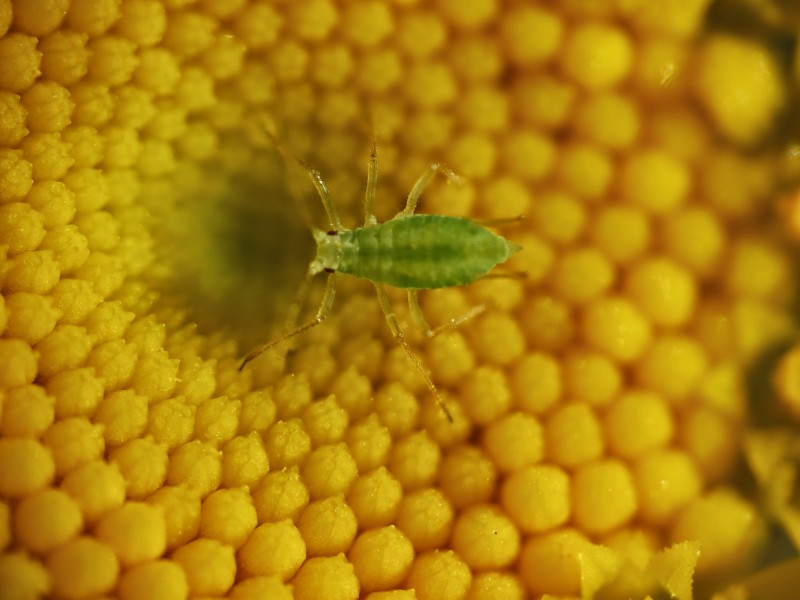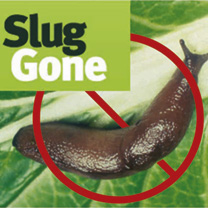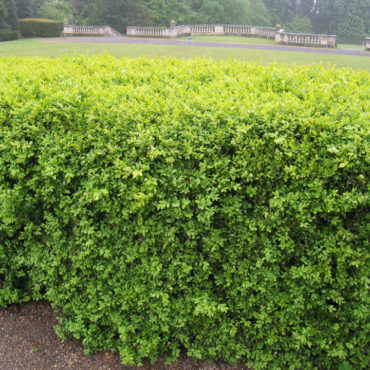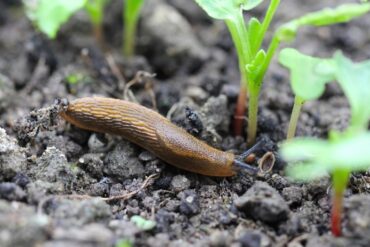It seems that my garden has been invaded this year by hordes of aphids. I don’t think I’ve ever seen quite so many! The term “aphid” includes greenfly, blackfly and other relatives with some even being a pinkish-red. These soft-bodied creatures multiply quickly with a single aphid creating many generations in just one season. And they all seem to be living in my garden!
Aphids like soft new growth on trees, shrubs, perennials, climbers, fruit, annuals and veg. In other words – they’ll eat most things. They do this by sucking the sap which then weakens the plant and can cause them to die.
Although most aphids are visible to the naked eye you’ll know they are around when you spot deformed and distorted leaves. They also spread virus diseases and secrete a sticky substance on stems and leaves called honeydew which in turn may be colonised by a black fungus called sooty mould.
Strong vigorous plants cope best with aphids so making sure your plants are growing in the right soil and aspect and are fed and watered as their type requires will certainly help. However, aphids will colonise any plant showing soft, new growth.
Insecticides such as Bio Kill are effective in ridding plants of aphids. As with all insecticides it is essential to follow the instructions carefully and to store them out of reach of both 2 and 4 legged small family members. Please don’t spray Bio Kill or any other insecticide on plants in flower as you may harm beneficial pollinating insects.
Organic controls include spraying with soapy water or alcohol solution. Possibly the most rewarding method is to lightly spray with water and then to gently rub the leaves and stems between your fingers. I suggest you wear gloves as squashed aphids will otherwise give your hands a green alien-like appearance.
Companion planting will certainly help with nasturtiums possibly being the most often used. French marigolds however are particularly useful in aphid control as they attract hoverflies who in turn feast on the aphids.
Certain types of insects will assist in your fight against aphids whereas others will be anything but helpful. Some ants farm aphids by storing eggs in their nests over winter and then carrying the baby aphids to plants in spring. The ants then feed on the sticky honeydew and will fight off predatory insects such as hoverflies to protect their food source. Very clever but not very helpful.
So if aphids and ants are the bad guys who are the good guys? Definitely ladybirds, they love to munch on aphids. Ladybird larvae can be purchased and delivered to your home – an easier solution than trailing round the countryside searching for ladybirds to place on your plants. Earwigs, parasitic wasps (yes, wasps can be good guys) and hoverflies are also good guys and lacewings will certainly help you with one lacewing larvae being able to eat as many as 100 aphids in just 1 hour.
Encouraging birds to the garden means you not only have the pleasure of watching them but tits and finches will also help to control aphids.
So, if like me you want to share your garden with wildlife then rather than getting too stressed about the aphids perhaps the best solution is to encourage the good guys to take up residence and then leave them to keep things under control.
Last Updated on February 15, 2023 by Suttons Horticultural Team





